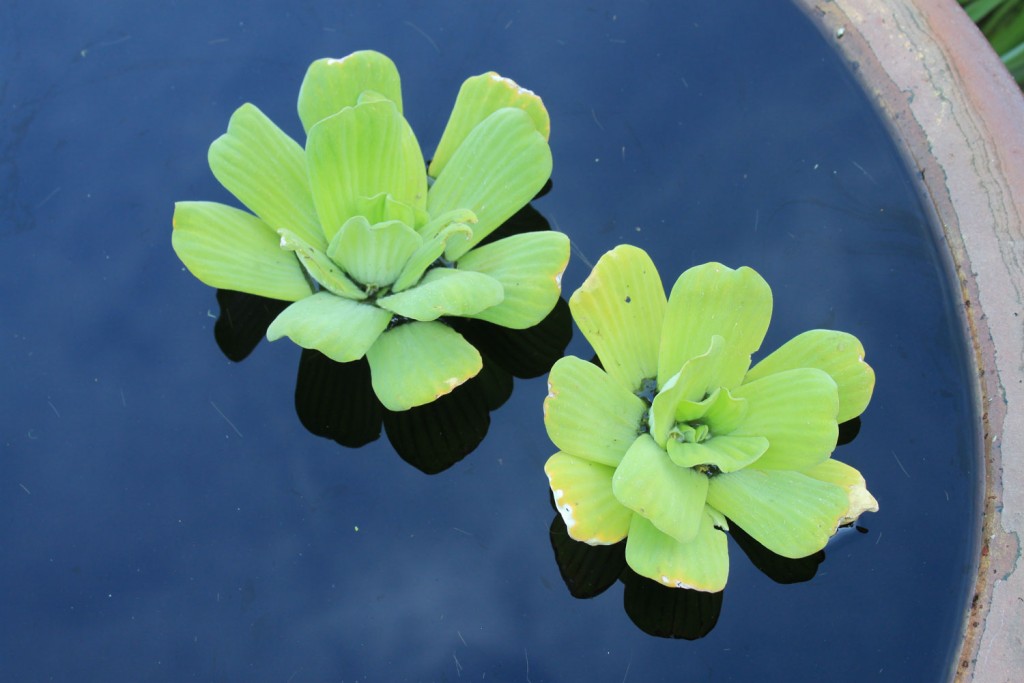Water Lettuce is one of the most popular floating plants in the North America. Experts can not pin point its exact origins but it has been present in the Florida since 1765. Like its name implies, this plant is similar to a lettuce and it sheds its outer leaves as new ones grow from the center. Its leaves are thick and have a natural coating to them that makes them impermeable. They can grow up to 10 inches in height and 4 inches wide, depending on the pond where they are located and the nutrients.
In Water Gardens, the water lettuce is used to provide shade to pond fish and its long roots provide shelter to smaller fish and fry. Also, they help oxygenate pond water and reduce algae by depriving them of nutrients.
Water Lettuce thrives in warm weather but it is helpful to provide them with some shade. In colder regions, this plant will perish as it is susceptible to frost. The best is to bring them indoor during colder temperatures and release them back to the pond during spring. The ideal regions for this plant is zone 9-11 in the United States.
Winter and Water Lettuce
The Water Lettuce is a tropical plant and does incredibly well during warm seasons. However, due to this plant’s popularity among pond keepers, many end up in regions with cold weather and they will end up dying if they are left in the pond exposed to the cold. The best way to winterize Water Lettuce and enjoy them during the winter is to place them in an aquarium and provide them with light in the natural spectrum (5000-7000K). In addition, one can add a water heater to keep the water temperature in the 75-80 F range and aerate the water with a basic air pump. These conditions will not only help the Water Lettuce survive but thrive during winter as they will continue to propagate just like in summer time.

